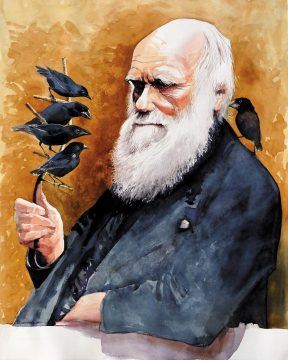
David Quammen in The New York Review of Books:
Charles Darwin is ever with us. A month seldom passes without new books about the man, his life, his work, and his influence—books by scholars for scholars, by scholars for ordinary readers, and by the many unwashed rest of us nonfiction authors who presume to enter the fray, convinced that there’s one more new way to tell the story of who Darwin was, what he actually said or wrote, why he mattered. This flood of books, accompanied by a constant outpouring of related papers in history journals and other academic outlets, is called the Darwin Industry.
There’s a parallel to this in publishing: the Lincoln Industry, which by one authoritative count had yielded 15,000 books—a towering number—as of 2012, when an actual tower of Lincoln books was constructed in the lobby of the renovated Ford’s Theatre, the site of his assassination, in Washington, D.C. It rose thirty-four feet, measured eight feet around, yet contained less than half the total Lincoln library. You could think of the Darwin library as a similar tower of books three stories high, big around as an oak, festooned with biographies and philosophical treatises and evolutionary textbooks and Creationist tracts and the latest sarcastic volume of The Darwin Awards for suicidal stupidity and books with subtitles such as “Genetic Engineering and the Future of Humanity.” Janet Browne’s magisterial two-volume life would be included; so would David Dobbs’s Reef Madness, about Darwin’s theory of the formation of coral atolls, and a handful of books on the Scopes trial. Lincoln and Darwin were born on the very same date, February 12, 1809: a good day for the publishing business.
More here.
